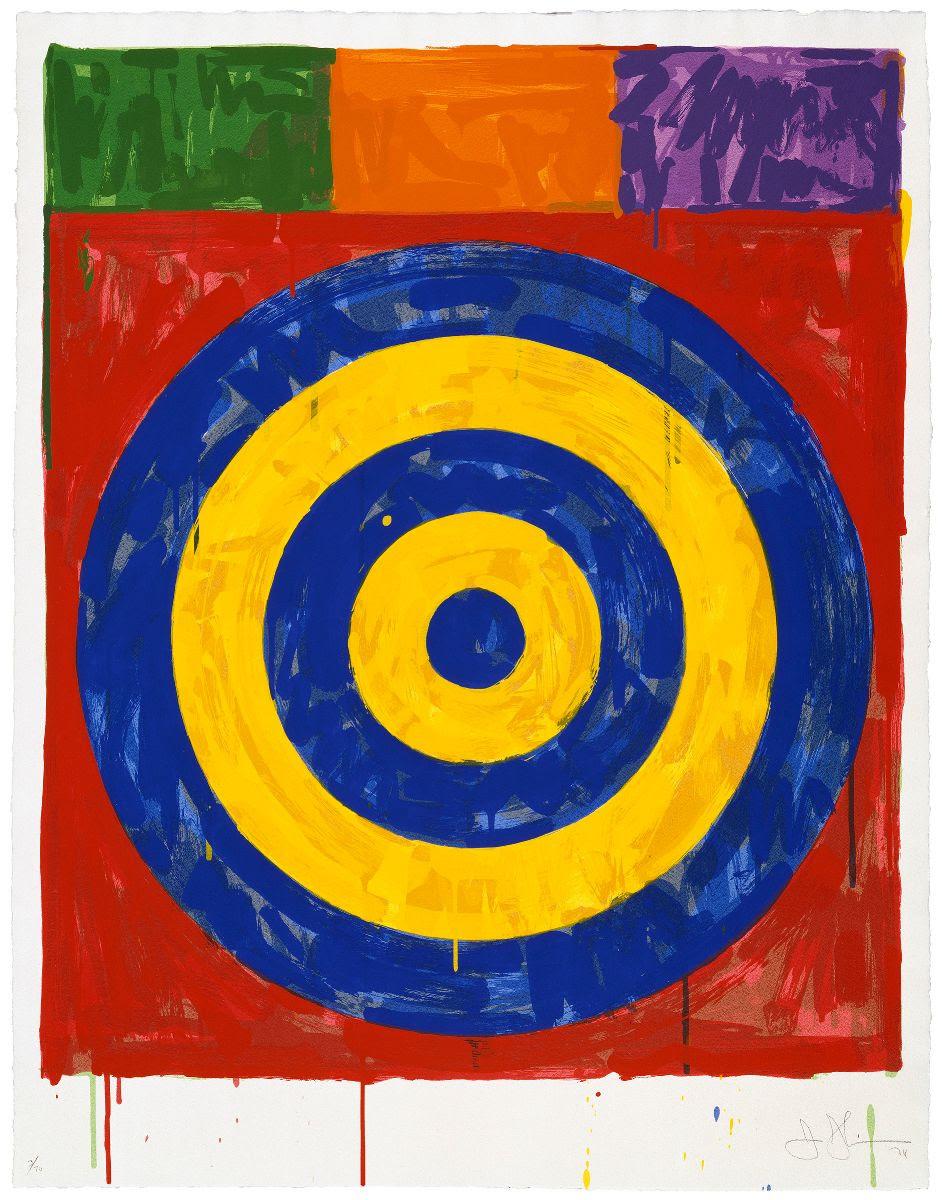

He started introducing text and numbers into his abstract paintings, such as Gray Numbers (1957) and False Start (1959), thus reinstating content.
#JASPER JOHNS SERIES#
Johns is best known for his series of flags, maps, targets, letters and numbers, a practice he began in 1954 after burning all his previous artwork. The architect Philip Johnson is the principal designer of his Saint Martin home, a long, white, rectangular structure divided into three distinct sections. He first began visiting Saint Martin in the late 1960s and bought the property there in 1972. Until 2012, he lived in a rustic 1930s farmhouse with a glass-walled studio in Stony Point, New York. Johns currently lives in Sharon, Connecticut, and on the island of Saint Martin. In 1963, Johns and Cage founded the Foundation for Contemporary Performance Arts, now known as the Foundation for Contemporary Arts in New York City. In 1960 he received the Vincent van Volkmer Prize. It was here that Alfred Barr, the founding director of New York's Museum of Modern Art, purchased four works from this show. Something one could not imagine, new and out of the blue." Castelli immediately offered Johns his first solo show. "And then I was confronted with that miraculous array of unprecedented images - flags, red, white and blue. In 1958, gallery owner Leo Castelli discovered Johns while visiting Rauschenberg's studio. Working together they explored the contemporary art scene, and began developing their ideas on art. During the same period he was strongly influenced by the gay couple Merce Cunningham (a choreographer) and John Cage (a composer). For a time they lived in the same building as Rachel Rosenthal. In 1954, after returning to New York, Johns met Robert Rauschenberg and they became long-term lovers. In 19, he was stationed in Sendai, Japan, during the Korean War. He then moved to New York City and studied briefly at the Parsons School of Design in 1949. Johns studied a total of three semesters at the University of South Carolina, from 1947 to 1948. I think I thought it meant that I would be in a situation different than the one that I was in." Recounting this period in his life, he said, "In the place where I was a child, there were no artists and there was no art, so I really didn't know what that meant. He completed Edmunds High School (now Sumter High School) class of 1947 in Sumter, South Carolina, where he once again lived with his mother. He spent time with his father Jasper, Sr and stepmother, Geraldine Sineath Johns, who encouraged his art by buying materials for him to draw and paint. He then spent a year living with his mother in Columbia, South Carolina, and thereafter, several years living with his Aunt Gladys in Lake Murray, South Carolina, twenty-two miles from Columbia. In 2018, The New York Times called him the United States' "foremost living artist." īorn in Augusta, Georgia, Jasper Johns spent his early life in Allendale, South Carolina, with his paternal grandparents after his parents' marriage failed. He was elected to the American Philosophical Society in 2007. Johns has received many honors throughout his career, including the National Medal of Arts in 1990 and Presidential Medal of Freedom in 2011. At multiple times works by Johns have held the title of most paid for a work by a living artist. Johns's works regularly sell for millions of dollars at sale and auction, including a reported $110 million sale in 2010. He is well known for his depictions of the American flag and other US-related topics. Jasper Johns (born May 15, 1930) is an American painter, sculptor, and printmaker whose work is associated with abstract expressionism, Neo-Dada, and pop art.

This rough method of construction is rarely visible in photographic reproductions of his work. This image illustrates Johns's early technique of painting with thick, dripping encaustic over a collage made from found materials such as newspaper. Detail of Flag 1954–55, Museum of Modern Art, New York City.


 0 kommentar(er)
0 kommentar(er)
